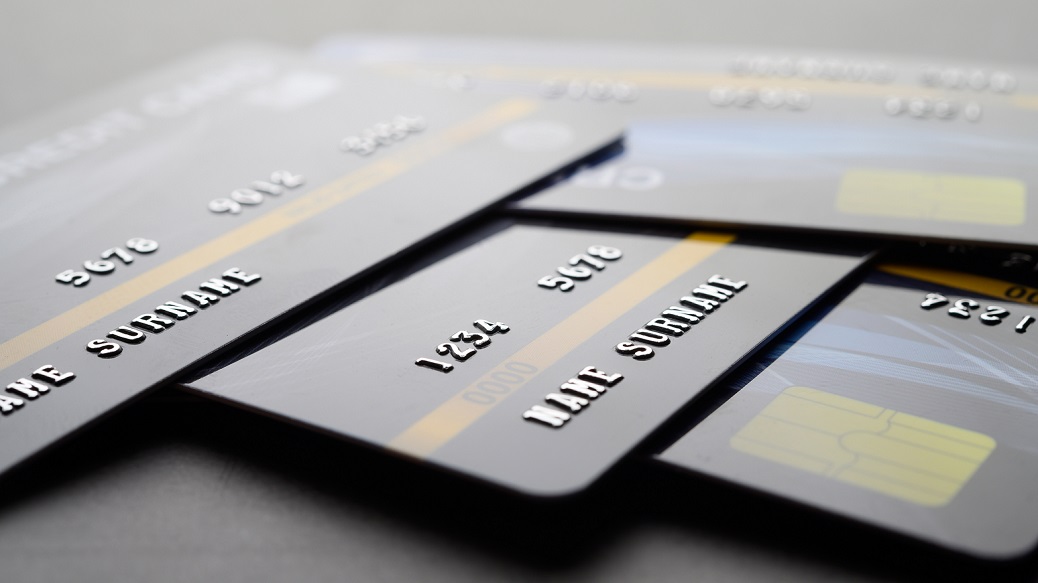How banks charge you for using these

As a banking product, debit cards have gained in popularity over recent years, with more and more consumers swiping these more and more. Sample this – while debit-card usage in ATMs dropped by 18 per cent between August 2013 and August 2018, its usage at point-of-sale (PoS) outlets increased by 200 per cent during the same period. At the same time, this is also true that when a certain product begins to be used extensively, the negative features/fallouts come to the fore. In the following report, we will focus on these aspects and also assess the various banks’ offerings on some standard parameters.
For this study, we chose private banks mainly because they are more aggressive in their approach in providing latest technologies to customers, as compared to nationalized banks. Among the private banks, we considered their people-to-bank network ratio in the country as measured in the number of branches serving customers. Narrowing it down, we selected those private banks that were operating more than 500 branches in India.
What are e-payments?
An e-payment system is a way of making transactions or paying for goods and services through an electronic medium, without the use of cheque or cash. It’s also referred to as an electronic payment system or online payment system.
The final 12 banks were compared on their charges, if any, for services/facilities such as card issue, annual maintenance, PoS transactions, transactions per month at ATMs (own bank), ATM-transaction fee (beyond limit), international card-transaction fee, renewal of card, and issue of duplicate card/PIN. We gave the highest weightage (20 points) to customer feedback, which also helped in determining the most important and beneficial variables. These variables have a direct bearing on the product structure. Our questionnaire covering various features of banks’ debit cards received responses from more than 500 customers.
In India, total debit cards in circulation as on November 2017 was 731,332,595 and this grew to 805,522,146 as on August 2018, thereby registering about 109% growth. Consequent growth in rupee value was 2,492,721.70 Mn (November 2017), as against 2,759,761.00 Mn (August 2018), which is a jump of 109.67%.
CV Recommendations
Best Buy
Yes Bank
Good Buy
Tamilnad Mercantile Bank
Fair Buy
Karur Vysya Bank
E-PAYMENTS THROUGH DEBIT CARDS: A COMPARATIVE CHART
| CV Weightage Points (100) | e-Payments thru Debit Card | Yes Bank | Tamilnad Mercantile Bank | Karur Vysya Bank | Federal Bank | Lakshmi Vilas Bank | Karnataka Bank | HDFC Bank | Axis Bank | IndusInd Bank | City Union | South Indian Bank | Bandhan Bank |
| 10 | Card-issue fee | 149 (4) | Nil (10) | 125 (7) | Nil (10) | Nil (10) | Nil (10) | NS (0) | Nil (10) | 249 (2) | Nil (10) | 200 (2) | 200 (2) |
| 10 | Annual-maintenance fee | 149 (4) | 100 (7) | 175 (2) | 150 (4) | 100 (7) | 150 (4) | 200 (2) | Nil (10) | 249 (2) | NS (0) | 200 (2) | 200 (2) |
| 5 | Renewal of card fee | 149 (3) | NS (0) | Nil (5) | Nil (5) | NS (0) | NS (0) | 200 (1) | NS (0) | 249 (1) | Nil (5) | NS (0) | NS (0) |
| 5 | Issue of duplicate PIN fee | 50 (3) | 50 | Nil (5) | 50 (3) | 100 (1) | NS (0) | 50 (3) | Nil (5) | 20 (3) | NS (0) | 100 (1) | NS (0) |
| 5 | Duplicate-card fee | 149 (3) | 200 (3) | 100 (5) | 300 (1) | 200 (3) | 100 (5) | 200 (3) | NS (0) | 249 (1) | 250 (1) | NS (0) | NS (0) |
| 10 | PoS transaction charge (%) | NS (0) | Nil (10) | NS (0) | 2.5 (5) | NS (0) | 2.5 (5) | Nil (10) | NS (0) | NS (0) | NS (0) | NS (0) | NS (0) |
| 10 | Free transactions per month at ATMs (own bank) (no.) | Free (10) | Free (10) | Free (10) | NS (0) | Free (10) | 8 (7) | 5 (4) | 4 (1) | Free (10) | NS (0) | NS (0) | Free (10) |
| 10 | Free transactions per month at other banks’ ATMs (no.) | 5 (4) | 5 (4) | 5 (4) | Free (10) | 3 (1) | 8 (7) | 3 (1) | 4 (2) | 5 (4) | 5 (4) | 5 (4) | 5 (4) |
| 5 | ATM transaction fee (beyond limit) | 20 (3) | 20 (3) | 20 (3) | 20 (3) | 18 (5) | 20 (3) | 20 (3) | NS (0) | 20 (3) | 20 (3) | 20 (3) | 20 (3) |
| 5 | International card-transaction fee (cash withdrawal) | 120 (5) | 100 (5) | 125 (5) | 100 (5) | 100 (5) | 150 (2) | 110 (5) | NS (0) | 125 (5) | NS (0) | 150 (2) | 125 (2) |
| 5 | International card-transaction fee (balance enquiry) | 20 (5) | NS (0) | 25 (2) | 25 (2) | 25 (2) | 25 (2) | 25 (2) | NS (0) | NS (0) | NS (0) | 25 (2) | 25 (2) |
| 20 | Customer feedback | 18 | 6 | 5 | 3 | 4 | 2 | 10 | 8 | 3 | 6 | 2 | 1 |
| Total | 62 | 61 | 53 | 51 | 48 | 47 | 44 | 36 | 34 | 29 | 18 | 29 | |
Notes:
a) Information given here has been sourced from banks’ websites and brochures as on 03-12-2018.
b) Unless specified otherwise, all figures are in rupees.
c) NS – not specified
d) For the purposes of this study, we have considered only those private banks that have 500 or more branches in India.
e) The figures mentioned above pertain to metropolitan branches.
f) In many banks the GST is included in service charges and is hence not specified here.
g) Charges for services described differently in nomenclature are grouped under major heads.
There are usually two types of charges on a debit card. One is the annual fee that a bank charges for issuing the card to the customer. The other is the convenience fee that is charged at merchant outlets for swiping the card at a point-of-sale (POS) terminal.
A customer is entitled to eight free monthly transactions at an ATM (five at their home bank ATMs and three at non- home bank ATMs) in a metro city. Thereafter, a bank charge is levied on each ATM transaction.
The Advantages in Digital Transactions
- The biggest advantage is convenience. Customers can pay for items on an e-commerce website at anytime and anywhere. They just need an internet-connected device.
- Lower transaction costs and decreased technology costs make it more convenient and simple.
- Transactions are made in seconds without wasting customer’s time.
- One can always check their virtual account and keep track of their transaction history.
- One can reach more clients from all over the world, resulting in more sales.
And the Limitations
- Difficult for a non-technical person: Most of the digital payment modes are based on mobile phones, the internet and cards. These modes may be somewhat difficult for a layperson to understand and accept.
- The risk of data theft: Hackers can attack the servers of the bank or the e-wallet you are using and get your personal information. They can use this information to steal money from your account.
- Overspending: You keep limited cash in your physical wallet and may think twice before buying anything. In digital payment modes, you have all your money with you always. This can result in overspending.
Do These
- Sign immediately on receipt of the debit card (at the back).
- Change the PIN at frequent intervals.
- During PoS transactions, ensure that all relevant details are correct before putting your PIN number so that the card does not get declined (some banks make it applicable for international
transactions). - Use the debit card only on reputed websites, be it for using through the internet or through a
POS. - Retain the transaction confirmation receipt after using the debit card.
- Be sure to check the card statement and report immediately to your bank if you find any transaction that is suspicious in nature or has not been authorized by you.
- Keep the bank’s phone number handy in case of a lost/stolen debit card so that the card can be immediately blocked from misuse.
- Link your mobile number/email to your debit card/bank account.
Not Any of These, though
- Do not click on the ‘save’ option for storing card details and/or password, as it can become accessible to accidental users.
- Avoid using computers at cyber cafes or at any other public place for online transactions.
- Do not respond to, or continue a call from, any number that requires you to disclose card/account details or any other vital information, as none of the banks would ring you up/send email for seeking such information.
- Avoid obvious/easy-to-guess PIN numbers – for example, car number, date of birth, house
number. - Do not lend your debit card to anyone as this card is non-transferable and there is no guarantee that the user will keep it secure.
- Do not immediately throw the charge transaction slip generated by an ATM; carry it with you and throw it somewhere else. This will ensure that scamsters/fraudsters do not misuse the details available in the slip.
Banks have introdu+ced chip-enabled credit/debit cards to enhance data security. Customers need to contact their banks and complete the formalities for exchanging their old cards for the new chip-based debit cards.
Fraudulent Transactions and Liability of the Cardholder
Reserve Bank of India, in its circular dated 06.07.2017, spelled out zero liability and limited liability.
- Zero liability
A customer’s entitlement to zero liability shall arise in the following events:
- Contributory fraud/negligence/deficiency lies on the part of the bank
- Third-party breach where the deficiency lies neither with the bank nor with the customer but lies elsewhere in the system, and where the customer notifies the bank within three working days of receiving the communication from the bank regarding the unauthorized transaction
- Limited liability
A customer shall be liable for the loss occurring due to unauthorized transactions as under:
- Negligence by customer: Cases where the loss is due to negligence by a customer, such as where he has shared the payment credentials, the customer will bear the entire loss until he reports the unauthorized transaction to the bank. Any loss occurring after the reporting of this unauthorized transaction shall be borne by the bank.
- Delay in reporting or customer’s liability is not proved: Cases where the responsibility for the unauthorized transaction lies neither with the bank nor with the customer, but lies elsewhere in the system, and where there is a delay (of 4 to 7 working days after receiving the communication from the bank) on the part of the customer in notifying the bank of such a transaction, the per-transaction liability of the customer shall be as delineated in the accompanying table.
| Type of Account | Maximum Liability (Rs) |
| Basic SB deposit accounts | 5,000 |
| All other SB accounts, prepaid
payment instruments and gift cards, etc. |
10,000 |
| All other accounts and credit cards (above particular limits) | 25,000 |
Summary of Customer’s Liability
| Time Taken for Reporting Fraudulent Transaction | Customer’s Liability (Rs) |
| Within 3 working days | 0 |
| Within 4–7 working days | The transaction value or the amount as mentioned in the table below (on maximum liability), whichever is lower |
| Beyond 7 working days | As per bank’s board-approved policy |
Reversal Timeline for Zero Liability/Limited Liability of Customer
- On being notified by a customer, the bank shall credit (or by reversal of debit) the amount of unauthorized transaction back to the customer’s account within 10 days without waiting for the settlement of insurance claim, if any. The credit or reversal of debit shall be value-dated so as not to cause loss of bank interest to the customer on the transaction. Banks may also at their discretion decide to waive off any customer liability even in cases of customer negligence.
- Where the bank is unable to resolve the complaint or determine the customer liability within 90 days, it will be liable to pay compensation (the like amount of the alleged unauthorized transaction) to the customer.
- The customer is also entitled to no loss on account of bank interest on the unauthorized transaction (in case of debit cards).
Shape of Things to Come?
- Mobile wallets will soon be linked to your bank account so that there is a two-way funds transfer between them (loading mobile wallets through debit to bank account, and vice versa).
- The quick response code (QR Code) is going to be the future app for all payments in merchandise purchases, as merchants accepting QR code will have to shell out only Rs 50 (a PoS machine can set a merchant back by Rs 6,000 to Rs 10,000).
- Plastic cards (credit/debit/ATM cards) may soon be replaced by Aadhaar-enabled payment systems (AEPS) wherein all you will have to do is affix your fingerprint(s) after feeding your Aadhaar number to withdraw/conduct cash/transactions.
- Some banks have already introduced the finger-identified system in their in-house ATMs, though on a smaller scale, which in future could be the norm for conducting ATM transactions.
- Voice recognition may also become the future norm in personal identification processes.
Takeaways
- Choose a debit card that can be used globally if you are a frequent traveller abroad.
- Choose one where there is no annual fee or a minimum annual fee.
- Go for a debit card with a bank where there is an effective grievance redressal mechanism.
Related
How to Pick the Right Credit Card
Credit cards are super useful in India, giving you an easy way to pay for things, flexibility, and some cool perks. But with so many credit cards...
How to Use a Debit Card Online Safely: Debit Card Safety Tips You Mustn’t Ignore
If you have never used a debit card before and you have questions like how to use a debit card online or how to use a debit card online safely, then...
Is it safe to shop online with a debit card?
If you are an Indian consumer who often wonders is it safe to shop online with a debit card then you should know the answer is yes. You just need to...



